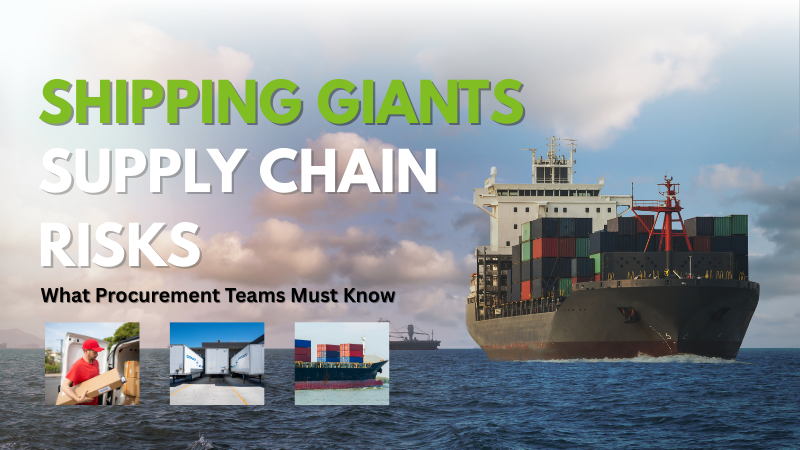Shipping Giants & Supply Chain Risks: What Procurement Teams Must Know

The global shipping industry is dominated by giants like MSC, Maersk, and COSCO, which control massive fleets and influence international trade routes. However, with great power comes great risks—especially for procurement teams relying on these carriers for timely and cost-effective logistics.
At Guangzhou Bright Future, we help businesses navigate supply chain challenges by understanding shipping risks and optimizing procurement strategies. In this article, we’ll break down:
✅ How shipping giants impact your supply chain
✅ Key risks to watch in 2025
✅ Strategies to mitigate disruptions
1. How Shipping Giants Influence Your Supply Chain
The top 10 shipping lines (like MSC, Maersk, CMA CGM, and COSCO) control over 80% of global container capacity. Their decisions directly affect:
✔ Freight Costs – Dominant carriers can dictate pricing, especially during peak seasons.
✔ Transit Times – Mega-alliances (like 2M and Ocean Alliance) optimize routes but may reduce flexibility.
✔ Port Congestion – Larger vessels mean slower unloading at crowded ports (e.g., Shanghai, Los Angeles).
Procurement Insight:
"If your supplier relies on a single shipping line, delays or rate hikes can disrupt your entire supply chain."
2. Top Supply Chain Risks in 2025 & How to Prepare
🛑 Risk #1: Capacity Shortages & Rate Volatility
Post-pandemic demand swings and Red Sea disruptions (2024-2025) have caused spikes in shipping costs.
Solution: Diversify carriers and book shipments early with Guangzhou Bright Future’s logistics network.
🛑 Risk #2: Port Congestion & Delays
Mega-ships (24,000+ TEU) overwhelm ports, leading to weeks of delays.
Solution: Use alternative ports (e.g., Nansha instead of Yantian) and monitor real-time congestion data.
🛑 Risk #3: Geopolitical & Regulatory Changes
Sanctions, trade wars, and new emissions regulations (CII, EEXI) impact shipping routes.
Solution: Work with a China-based sourcing expert (like us!) to adjust suppliers and logistics partners.
🛑 Risk #4: Carrier Alliances Reducing Flexibility
Only 3 major alliances (2M, Ocean Alliance, THE Alliance) control most capacity.
Solution: Avoid over-reliance on one alliance—spread shipments across multiple partners.
3. How Guangzhou Bright Future Helps Mitigate Shipping Risks
As your trusted sourcing partner in China, we provide:
🔹 Multi-Carrier Negotiations – Secure better rates with top shipping lines.
🔹 Alternative Routing – Avoid congested ports and strike-affected regions.
🔹 Supplier Diversification – Reduce dependency on single shipping lanes.
🔹 Real-Time Tracking – Monitor shipments to prevent delays.
Pro Tip:
"Procurement teams should always have a Plan B logistics strategy—whether it’s air freight for urgent orders or near-shoring options."
Conclusion: Stay Ahead of Supply Chain Disruptions
Shipping giants like MSC and Maersk are essential for global trade—but they also bring risks. By understanding capacity constraints, port bottlenecks, and geopolitical factors, procurement teams can build resilient supply chains.
🚢 Need a reliable sourcing partner in China?
📩 Contact Bright Future Sourcing today! We optimize your procurement strategy for cost, speed, and reliability.